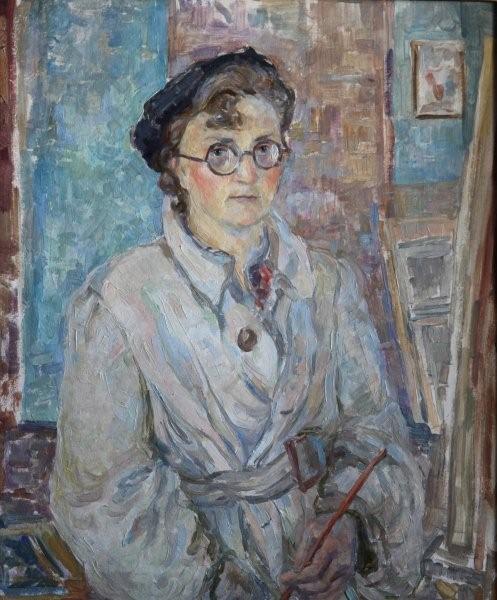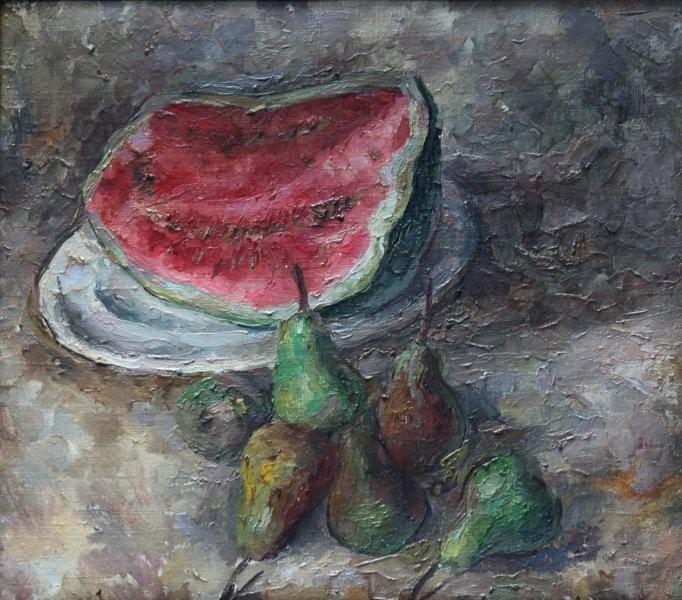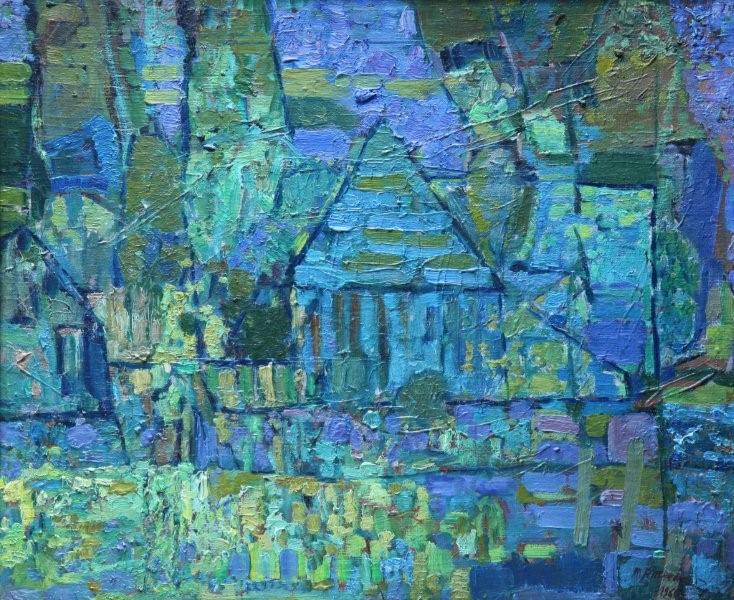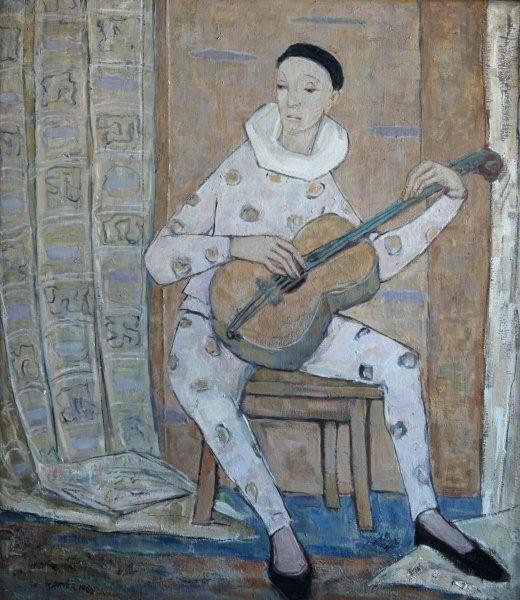Maria Ritter - priestess of art from Nowy Sącz
Artistic beginnings
The artistic aftermath of Maria Ritterówna is many hundreds or even thousands of works, taking into account multiple versions of the same theme in sketchbooks and miniature cardboard, made in order to find the most appropriate composition, the best iconographic shot: oil paintings, watercolors, gouaches, prints, drawings , collages, sculptures, wall paintings.
The artist's painting career spans almost fifty years of the 20th century, when many directions and trends in art emerged, emphasizing the need for individualization, emphasizing creative independence and innovation.
Despite her interest in the latest artistic trends, Maria Ritter always distanced herself somewhat from the extreme avant-garde. In her works from the 1920s, there are clear references to 19th-century realism and naturalism, as well as references to the work of academic professors (e.g. the painting In a Cafe is irresistibly associated with the painting of Wojciech Weiss). At that time, numerous portraits were created, especially many likenesses of children, probably not without the influence of Bolesław Barbacki, a master of this genre. Both these portraits and the still lifes of this period precisely imitated reality.
The artist's painting career spans almost fifty years of the 20th century, when many directions and trends in art emerged, emphasizing the need for individualization, emphasizing creative independence and innovation.
Despite her interest in the latest artistic trends, Maria Ritter always distanced herself somewhat from the extreme avant-garde. In her works from the 1920s, there are clear references to 19th-century realism and naturalism, as well as references to the work of academic professors (e.g. the painting In a Cafe is irresistibly associated with the painting of Wojciech Weiss). At that time, numerous portraits were created, especially many likenesses of children, probably not without the influence of Bolesław Barbacki, a master of this genre. Both these portraits and the still lifes of this period precisely imitated reality.
Inspirations
In the 1930s, Maria Ritter's paintings included more landscapes - views of Nowy Sącz, Sądecczyzna and Podhale, as well as more distant places, painted during her stay at the seaside and during foreign trips. After academic realism, the artist referred to post-impressionism and colorism - her color palette, initially somewhat subdued and relatively dark, became brighter, the lumpy forms gradually began to give way to more elongated ones, and the painting surface was divided into plane and color segments. Still lifes ceased to be painted with the intention of reproducing the real arrangement of objects in the most exact way, synthesizing objects into geometric forms as well as decisive divisions and decorativeness appeared - the artist was clearly fascinated by some achievements of the avant-garde, observed in Paris.
In turn, Italian experiences, contact with the best works of Renaissance art, had an impact on reaching for religious themes. Very often in the artist's sacral paintings there was also a specific idealization, referring to the early medieval and Byzantine stylistics. This work was a kind of antidote to the works glorifying the hard work of workers and peasants required from artists in the 1940s and 1950s. In addition to works created in accordance with the requirements of socialist realism, to which most artists associated in trade union organizations succumbed, Maria Ritter continued to create works in the manner developed in the 1930s, adding borrowings from the best models of old art.
In turn, Italian experiences, contact with the best works of Renaissance art, had an impact on reaching for religious themes. Very often in the artist's sacral paintings there was also a specific idealization, referring to the early medieval and Byzantine stylistics. This work was a kind of antidote to the works glorifying the hard work of workers and peasants required from artists in the 1940s and 1950s. In addition to works created in accordance with the requirements of socialist realism, to which most artists associated in trade union organizations succumbed, Maria Ritter continued to create works in the manner developed in the 1930s, adding borrowings from the best models of old art.
1960s and 1970s
In the 1960s and 1970s, the artist's most famous paintings with well-thought-out compositions and colors were created (including Amazon, Harmonist, Harlequin with a guitar, nudes, "construction" landscapes). These works are characterized by an increasingly limited range of colors, often subdued, even monochromatic, and a far-reaching synthesizing of simplified, stylized forms.
Maria Ritter created large-scale works, especially her own projects for the decoration and furnishing of churches (polychromes, altar paintings). At the same time, she was also a master of miniature, painting religious and genre scenes as well as portraits on small cards and boards. She was looking for new painting techniques to diversify the texture of the painting and achieve an interesting expression of the work. In addition to countless sketches and drawings, which were primarily a way to jot down ideas quickly, the artist also made prints, collages and sculptures. Undoubtedly, it was not without reason that she was called the Nowy Sącz priestess of art.
/Maria Marcinowska/
Maria Ritter created large-scale works, especially her own projects for the decoration and furnishing of churches (polychromes, altar paintings). At the same time, she was also a master of miniature, painting religious and genre scenes as well as portraits on small cards and boards. She was looking for new painting techniques to diversify the texture of the painting and achieve an interesting expression of the work. In addition to countless sketches and drawings, which were primarily a way to jot down ideas quickly, the artist also made prints, collages and sculptures. Undoubtedly, it was not without reason that she was called the Nowy Sącz priestess of art.
/Maria Marcinowska/




